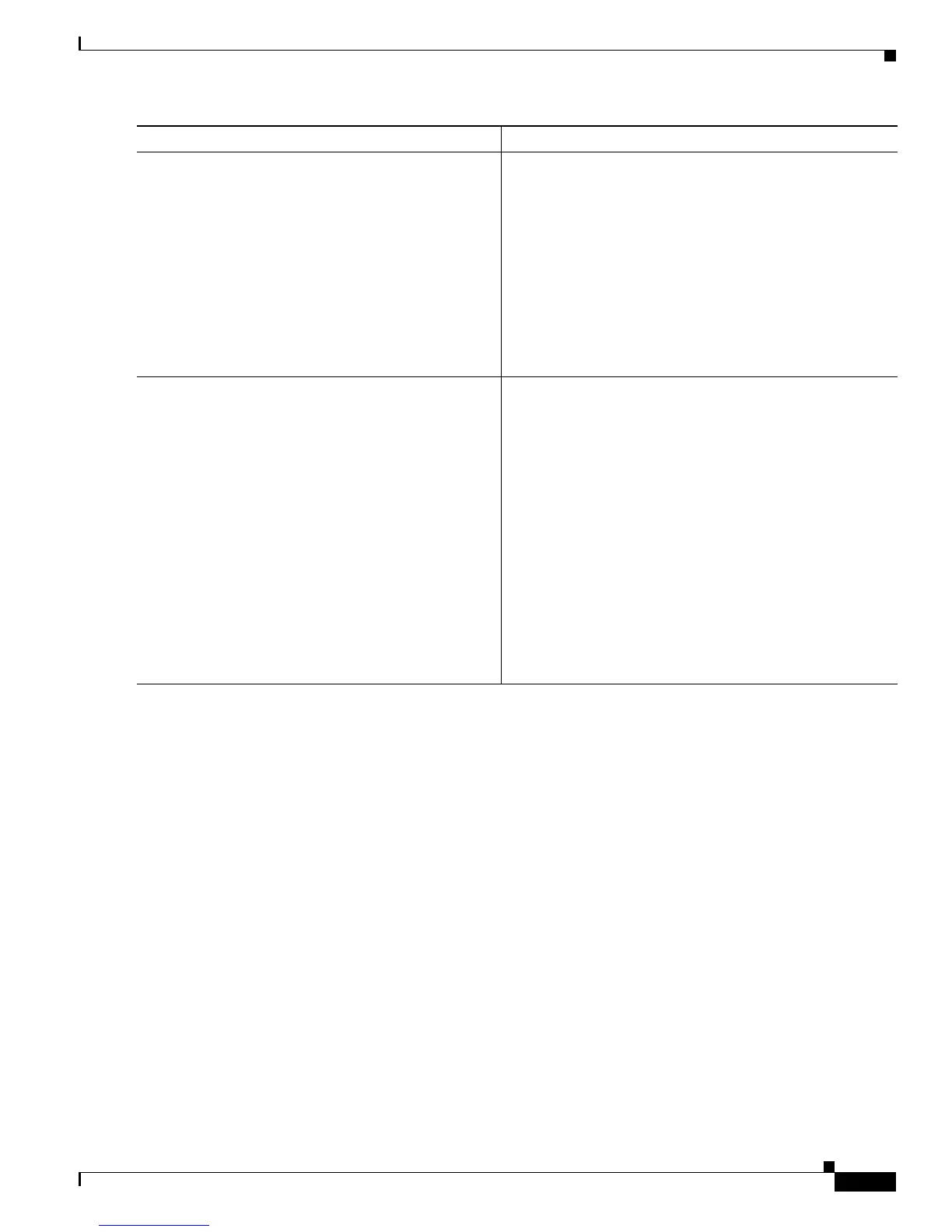15-33
Cisco 10000 Series Router Quality of Service Configuration Guide
OL-7433-09
Chapter 15 Oversubscribing Physical and Virtual Links
Configuring VC Weighting
Configuration Example for Configuring VC Weighting on a Subinterface Using Bandwidth Remaining
Ratio
The following example shows how to differentiate one ATM PVC from another during congestion by
using bandwidth-remaining ratios. In the example, during periods of congestion in which the traffic on
all PVCs on the interface exceeds the interface speed, the router uses the configured
bandwidth-remaining ratio of 10 to determine the amount of excess (unused by priority traffic)
bandwidth to allocate to non-priority traffic on PVC 0/200, relative to the other ATM PVCs configured
on the interface.
policy-map Child
class precedence_0
bandwidth 100
class precedence_1
bandwidth 10000
!
policy-map Parent
class class-default
bandwidth remaining ratio 10
service-policy Child
!
interface ATM2/0/3.200 point-to-point
ip address 10.20.1.1 255.255.255.0
pvc 0/200
Step 13
Router(config)# interface type
slot/module/port.subinterface [point-to-point |
multipoint]
Creates or modifies the interface you specify. Enters
subinterface configuration mode.
type is the interface type (for example, Gigabit Ethernet).
slot/module/port.subinterface is the number of the
subinterface that identifies the subinterface (for example,
1/0/0.1).
(Optional) point-to-point indicates that the subinterface is
a point-to-point subinterface.
(Optional) multipoint indicates that the subinterface is a
point-to-multipoint subinterface.
Step 14
Router(config-if)# service-policy {input |
output} parent-policy-name
Applies the parent policy to the subinterface.
input indicates to apply the service policy to inbound
traffic.
output indicates to apply the service policy to outbound
traffic.
parent-policy-name is the name of the parent policy map.
The router shapes the subinterface traffic to the shaping rate
specified in the parent class-default class and applies the
QoS actions specified in the child policy to traffic matching
the traffic classes.
During periods of congestion, the router uses the
bandwidth-remaining ratio specified in the parent policy
map to allocate unused bandwidth on this subinterface
relative to other subinterfaces.
Command or Action Purpose

